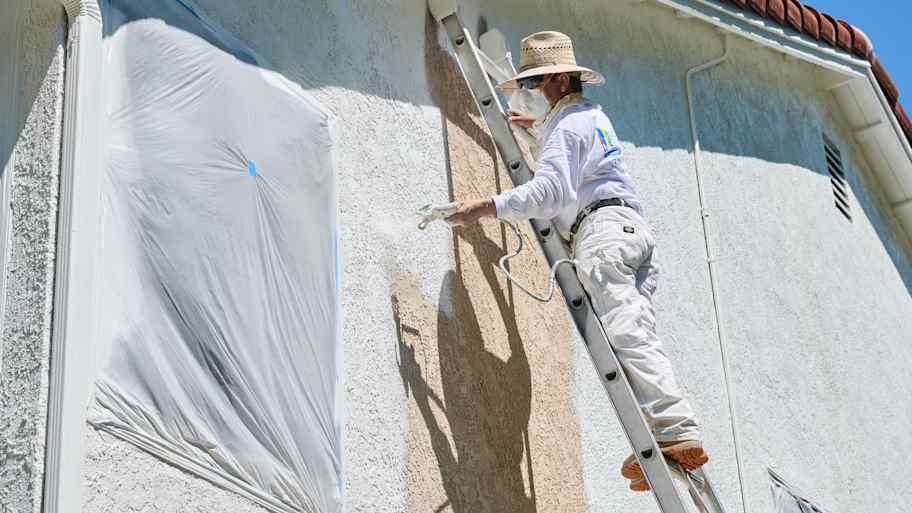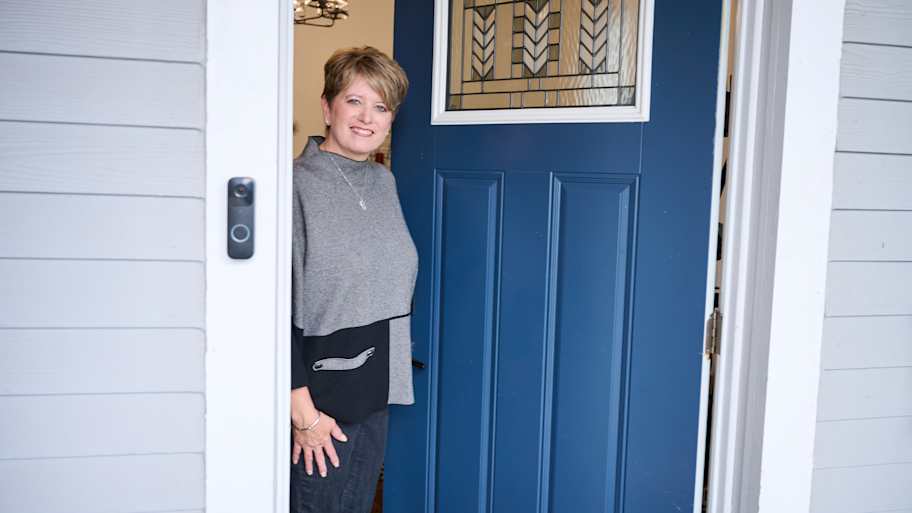4 Tips for Choosing the Best House and Deck Color Combination
Choose the perfect color combo for a stylish house and deck


When in doubt, use color theory for guidance.
Always choose a main color you love.
Installing new siding will cost more than painting your existing exterior.
Think of your exterior as a whole rather than separate parts.
Updating your house and deck color combination is the perfect opportunity to express yourself. Nothing can take your home’s exterior to the next level like a deck and siding refresh highlighting pre-existing features while boosting your curb appeal. Before consulting with a local exterior painter about your design plan, use this helpful guide to drive your color choices.
1. Use Color Theory to Guide You
Trust us—you’ll feel super fancy using color theory when you bust out a color wheel to choose colors that complement one another. Use these color wheel rules to inspire you as you choose colors for your home exterior and deck.
Complementary Colors
Complementary colors are exactly what they sound like: they complement each other. These colors sit across from one another on the color wheel and make each other pop, like green and red.
Proceed with caution, as the most vibrant hues might not be a good choice for your home. Opt for a more neutral-based shade if you prefer to play it safe. For example, sage green siding with a muted red, like terracotta-colored shutters, and a deep redwood deck draw the eye.
Analogous Colors

When going for analogous color schemes, you will choose one base color. The other colors will be those directly next to one another on the color wheel.
For example, to create a low-contrast exterior, pair gray siding with a darker tone like charcoal for the door and deck color. Then, choose a lighter gray for trim and accents. The main takeaway is to choose three colors next to one another on the color wheel to create an analogous scheme.
Triads
With triad color schemes, choose one color. Then, instead of going for the complementary color across the wheel, opt for the two colors on either side of the complementary shade.
So if green is the color of your home’s exterior, red is the complementary color. Move a shade to the right and left of red on the color wheel. Your new triad of colors will be red-orange and red-violet.
While this may seem like an odd combo, it’s important to remember that these schemes serve as a reference. A deep green-blue exterior will pair perfectly with a red-orange toned cedar deck and an eye-catching mauve door.
2. Consider Deck Material
The material a deck is made from dictates the painting process and whether it’s possible to paint at all. Let’s break down the most common deck materials.
Wood
Whether your wood deck is treated or untreated, you should be able to paint it. Untreated wood, usually made from cedar, is easier to paint. On the other hand, pressure-treated wood needs to be completely dry before it can be painted, and even then some types of paint may not perfectly apply to it. Use latex paint for pressure-treated wood instead of oil-based paint.
PVC and Vinyl
PVC and vinyl decks are often referred to interchangeably, but the two have minor differences. Either way, neither material is ideal for painting, due to their low-maintenance design.
Composite
Some types of composite decks can’t be painted. It comes down to whether the deck is capped—i.e., coated in a water-resistant polymer—or uncapped. Unfortunately, the more modern of the two options, capped decks can’t be painted or stained. Uncapped decks can be painted, but you should sand and prime beforehand.
3. Factor in Climate and Landscape
There are no hard-and-fast rules saying you have to choose a specific deck style per your location. However, a few tips come in handy to plan for the most long-lasting and cost-effective option.
Light-colored decks suit warm climates because they deflect sunlight and, as a result, won’t get as hot underneath your feet.
PVC, vinyl, and composite decks are good options in rainy and snowy areas because they are more water-resistant than wood. The same is true if you live somewhere with intensely fluctuating temperatures—wood expands and contracts more, so stick with synthetic materials.
Match your landscape by taking color inspiration from your surroundings. For example, houses in heavily wooded areas feel more natural with richly colored wood decks than aluminum ones. Meanwhile, nautical colors like white and blue and muted driftwood tones are common on beachfront decks because they evoke the ocean.
4. Complement the Home’s Architectural Style
When picturing certain architectural styles, from colonial to ranch to modern, our brains automatically fill in a deck that matches the aesthetic. Neutral colors like whites and browns pair well with older, more traditional architectural styles. Modern homes open up a wider variety of colors, including more striking options like black or dark gray.
For the most part, it’s best when a deck naturally accents the characteristics of a house; however, a strong contrast between deck and house, whether it’s based on design, materials, or paint color, can be an eye-catching way to go.
House and Deck Color Combination Ideas
Wondering which deck-house color pairing is best for your home? Check out the suggestions below for inspiration or consult your local painting pros for advice.
Blue House and Gray Decking
If your home’s siding is a light or medium-tone blue, try a cool gray tone for your decking for a complementary combination. That way, your home’s bold color will pop against the deck’s neutral coloring.
White House and Chocolate Brown Decking
Want to add a pop of color to your decking but keep it neutral? Consider using a deep, chocolate brown hue for your decking to add dimension to your home’s white siding.
White House and Deep Red Decking
A rich, deep red color is a popular decking choice with white houses. The warm tone pops against the neutral background and absorbs extra heat in the summer.
Yellow House and Natural Wood Decking
If your home’s siding is sunshine yellow, consider keeping your deck coloring neutral with natural wood and white. You can add bright deck furniture to incorporate pops of complementary colors, like navy blue.
Paige Novak contributed to this article.
Frequently Asked Questions
If your biggest concern is making sure your deck doesn’t show dirt, opt for a darker neutral color that blends in well with your surrounding landscape. A rich brown or dark grey are both good options that work with a variety of house colors. A high-quality acrylic paint is easy to clean and maintain, so it might be worth spending the money on.
Whether it’s better to stain or paint your deck is up to you and your personal preference. In terms of appearance, stain offers a natural look and a range of colorful undertones while paint is sleeker and you can choose just about any color imaginable. Stain tends to be less expensive and will only need one coat, but does not last nearly as long as paint.
Like the choice of stain vs. paint, your deck color is entirely up to you. By consulting color theory, you can make choosing a house and deck color combination much easier. Many people choose a darker color for their deck because it doesn’t show dirty footprints or other marks from daily wear and tear as much as a crisp white or other light color.





- 11 Vibrant Deck Color Ideas to Brighten Your Backyard
- Say Goodbye to Green! 7 Simple Tips for Adding Color to Your Landscape
- What Color Should I Paint My Room? 10 Tips to Get Right Look for Your Space
- Planning for Decking: Everything You Need to Know to Add a Deck to Your Home
- How to Pick Exterior House Paint Colors: 11 Tips for Choosing the Perfect Palette
- The Best Vinyl Siding Paint Colors to Elevate Your Curb Appeal
- No-Fail Tips for Choosing Interior Paint Colors
- How to Paint Your Deck in 4 Steps
- How to Use Color Theory in Home Design
- Who Builds Decks? Who to Call and What to Know

 - Derek Rose.png?impolicy=thumbnail)








